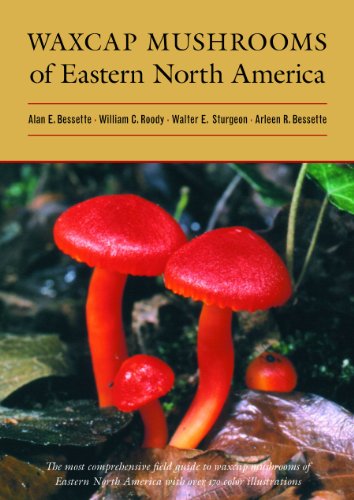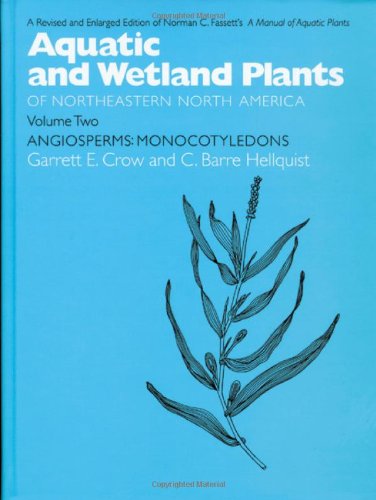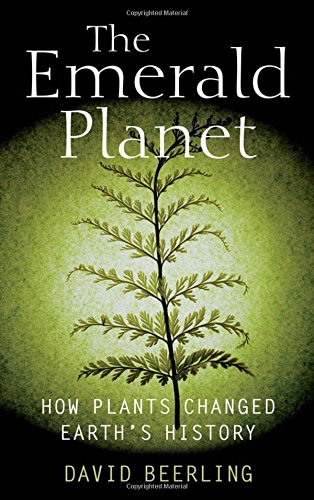(Part 3) Best botany books according to redditors
We found 138 Reddit comments discussing the best botany books. We ranked the 64 resulting products by number of redditors who mentioned them. Here are the products ranked 41-60. You can also go back to the previous section.




















Start by picking a guide for your area and reading it thoroughly, especially focusing on the anatomy of a mushroom. Go hunting a lot bringing back what you find, take spore prints and work though the IDs. Also joining a NAMA affiliated club will help tremendously.
Regional guides
Alaska
Common Interior Alaska Cryptogams
Western US
All The Rain Promises and More
Mushrooms of the Pacific Northwest
Midwestern US
Mushrooms of the Midwest
Edible Wild Mushrooms of Illinois and Surrounding States
Mushrooms of the Upper Midwest
Southern US
Texas Mushrooms: A Field Guide
Mushrooms of the Southeastern United States
Midwestern US
Mushrooms of the Midwest
Edible Wild Mushrooms of Illinois and Surrounding States
Mushrooms of the Upper Midwest
Eastern US
Mushrooms of West Virginia and the Central Appalachians
Mushrooms of Northeast North America (This was out of print for awhile but it's they're supposed to be reprinting so the price will be normal again)
Mushrooms of Northeastern North America
Macrofungi Associated with Oaks of Eastern North America(Macrofungi Associated with Oaks of Eastern North America)
Mushrooms of Cape Cod and the National Seashore
More specific guides
Psilocybin Mushrooms of the World
North American Boletes
Tricholomas of North America
Milk Mushrooms of North America
Waxcap Mushrooms of North America
Ascomycete of North America
Ascomycete in colour
Fungi of Switzerland: Vol. 1 Ascomycetes
PDFs
For Pholiotas
For Chlorophyllum
For parasitic fungi, Hypomyces etc "Mushrooms that Grow on other Mushrooms" by John Plischke. There's a free link to it somewhere but I cant find it.
Websites that aren't in the sidebar
For Amanita
For coprinoids
For Ascos
MycoQuebec: they have a kickass app but it's In French
Messiah college this has a lot of weird species for polypores and other things
Books that provide more info than field Mycology
The Kingdom of Fungi Excellent coffee table book has nice pictures and a breif guide to Fungal taxonomy and biology.
The Fifth Kingdom A bit more in depth
Introduction toFungi Textbook outlining metobolic, taxonomic and ecological roles of fungi. Need some level of biochemistry to have a grasp for this one but it's a good book to have.
You're looking for books about ethnobotany. Comprehensive books that cover different uses from all over the world are hard to find and expensive. This one has a nice general overview of the field:
https://www.amazon.com/Ethnobotany-Modern-Perspective-VAJRAVELU-RANI/dp/0757572510
Most books will focus on a specific region, culture, or a specific use for plants, so if you're looking for something cheaper, it's probably best to pick a location, people, or specific use for plants that you're interested in. Search for ethnobotany plus some relevant keywords.
David Brown literally wrote the book. It comes with a fold out map. It’s a pretty huge 4’x3’ map. I had it laminated and my son now has it on his wall.
Here’s the book
https://www.amazon.com/Biotic-Communities-Southwestern-United-Northwestern/dp/0874804590
Here’s the map
https://databasin.org/datasets/e8e241e869054d7e810894e5e993625e
What a great book, if you'd like to learn more about the amazing world of plants it's available here.
My favorites are:
Roger Phillips Mushrooms and Other Fungi....
https://www.amazon.com/Mushrooms-Other-Fungi-North-America/dp/155407651X
David Arora Mushrooms Demystified
https://www.amazon.com/Mushrooms-Demystified-David-Arora/dp/0898151694
Audubon Society Field Guide:
https://www.amazon.com/National-Audubon-Society-American-Mushrooms/dp/0394519922
DK Mushroom Book:
https://m.barnesandnoble.com/p/mushrooms-dk/1127751094/2689838557184
This last one is a big beautiful hardcover book with a lot of different mushrooms from around the world and some excellent pictures:
https://www.amazon.com/Book-Fungi-Life-Size-Hundred-Species/dp/0226721175
Other than that it would depend on your region because I have some guides I love that focus on my region.
http://www.amazon.com/Pretty-Modern-Beauty-Plastic-Surgery/dp/0822348012 - Less about medicine, more of an ethanography, there was a huge brazilian population where I used to live.
>http://www.amazon.com/Improvising-Medicine-Oncology-Emerging-Epidemic/dp/0822353423 - your call, I've read others that are similar in the past (dark african hospitals, mom was a doctor, it came up) but this is apparently more popular now. 10 years ago it was the horror of aids, those books are almost unreadable, if it were any other subject you'd simply have trouble suspending disbelief. http://www.amazon.com/The-Paradox-Hope-Journeys-Borderland/dp/0520267354 is another similar book.
http://www.amazon.com/Tales-Shamans-Apprentice-Ethnobotanist-Medicines/dp/0670831379 - Is probably better if you don't want all the doom/gloom view of african medicine.
http://www.goodreads.com/book/show/10235.Mountains_Beyond_Mountains - Figure you've read this, it's highly recommended and extremely popular now, part of the whole 're-imagining medicine' movement.
>http://www.goodreads.com/book/show/161121.My_Own_Country - Speaking of my mom, she was a doctor near here, it's definitely a different world.
http://www.amazon.com/Man-Who-Mistook-His-Wife/dp/0684853949 - Read it because of the neuroscience aspect, but I suppose you could consider it a very specialized ethanography of sorts.
Honestly the most popular nowadays is probably the one about the Hmong girl in my first post. I'd recommend it more because I've known a few Hmong and the cultural differences are fascinating.
Aquatic and Wetland Plants of Northeastern America:
Volume 1: http://www.amazon.com/Aquatic-Wetland-Plants-Northeastern-America/dp/0299163342/ref=pd_sim_b_1
Volume 2: http://www.amazon.com/Aquatic-Wetland-Plants-Northeastern-America/dp/029916280X
Hard to say- you have got a lot of lichen species in that photo, and you often need some pretty minute, clear details to even get to the genus level with lichens. That being said I can say with a reasonable degree of certainty that you've at least got some Aspicilia caesiocinerea, some Rhizoplaca chrysoleuca, and something like Xanthoparmelia Coloradoensis. If you want to get going on learning to ID lichens yourself, I recommend A Rocky Mountain Lichen Primer. If you want a seriously deep-dive inventory of lichens in the state, check out the list so far on CNALH.
My pleasure!
If you are interested in learning how to identify these kinds of fungi yourself, I strongly recommend these two books:
The first one is my favorite and absolutely indispensable! I just wish they would update it with a new edition to reflect some of the taxonomic changes that have happened in the past 20 years. So although the genus designations may not be right on some of the species, the keys are solid and the illustrations are fantastic. They'll take you to where you need to go, I just recommend doing a synonym search after you ID with that book to make sure you are using the most current nomenclature. :)
a great place to start:
Plant Form
and if you get more into mathematical modeling...
Phyllotaxis
A Rum Affair by Karl Sabbagh ... Doesn't get a great review on Amazon, but I liked it. It's about a guy investigating the work of a botanist who may have been fudging some of his records. Touches on ethics, ones legacy, etc.
Amazon seems to have a few, along with some titles about edible and medicinal plants.
I think you're talking about the eruption of the Deccan Traps, which happened around the end of the Cretaceous. Here's the wikipedia page for it, but if you want a pretty good description of its effects on the climate (and life on earth at that time), I think The Emerald Planet by David Beerling actually did a really good job.
As others have said, it depends on your location. I'm in Illinois and I use Vascular Flora of Illinois by Mohlenbrock Easily the best Key i've come across
I bought the book and the atlas and didn't use either one. His lectures contradict them.
http://www.amazon.com/Photographic-Atlas-Botany-Laboratory/dp/0895829487/ref=sr_1_14?s=books&ie=UTF8&qid=1419390166&sr=1-14
http://www.amazon.com/Botany-Introduction-James-D-Mauseth/dp/0763753459/ref=sr_1_2?s=books&ie=UTF8&qid=1419390348&sr=1-2&keywords=Mauseth+botany
I just came back because I felt bad about the flippant way I put that. Sorry about that. Of course neither of our comments have any validity in moving the discussion forward. So I'll try to actually say something productive.
Bio-geometry is the same as any other geometry. If you scale a triangle down, the angles are the same as before it was scaled down, same as with anything and same as in high-school geometry.
On the other hand, there are things that don't scale in as simple a way--the classic examples like an ant being able to lift some huge factor times its own weight, or a chipmunk being able to jump X times it's own height vs. an elephant which apparently can't jump at all. There's a wonderful book about that called On Size and Life.
Those things involve forces and dynamics, not just geometry.
Of course pedaling involves forces and geometry, and so we can't throw out the possibility that the angles you would want for pedaling are different for a smaller size body. From the geometry alone--the stresses on the knee, the effective use of muscle--you'd want the same angles regardless of body size, and to get that, you'd want proportional crank arms. The question would be whether there's some difference beyond that. There are differences in the way difference power requirements scale with rider size--rolling resistance vs. wind resistance--but with a bike, very unlike running, that all translates to a power requirement at the rear wheel, a requirement that can be met with any combination of cadence and pedal torque at the cranks. So it's a lot less complicated than analyzing animal gaits.
But we could consider the fact that in general, smaller creatures are able to move their muscles faster.. That likely means that the optimal cadence for a 5'2" person is higher than for a 6' person. Except if we made an adjustment for that, we'd end up making the short-person cranks even shorter, since short cranks are generally better for spinning at a higher cadence.
But you needn't take my word for it. People who have looked at it carefully come to the same conclusion
My girlfriend actually got me Brodo and Sharnoff for christmas! It's made me consider giving Cladonia another try (I previously was trying to apply Macrolichens of the Pacific North West to California lichens, and was foiled by their not really bothering with most of the genus). Would Hinds and Hinds be at all useful for west coast species? I know many lichens are pretty cosmopolitan, but still, there's a limit.
Thanks for the link, btw, it looks incredibly useful. Somehow in my googling I haven't managed to run across that before.
Do you know of any good and/or recent general lichenology texts, or mycology texts with reasonable coverage of lichens? So far most of my general knowledge of them comes from the supplementary materials in field guides, with Brodo and Sharnoff being the best by far.
I need Nature's Fabric: Leaves in Science and Culture by David Lee in pdf format.
https://www.amazon.com/Natures-Fabric-Leaves-Science-Culture-dp-022618059X/dp/022618059X/ref=mt_hardcover?_encoding=UTF8&me=&qid=1537845220
ISBN-13: 978-0226180595
ISBN-10: 9780226180595
3$ paypal.
No longer needed.